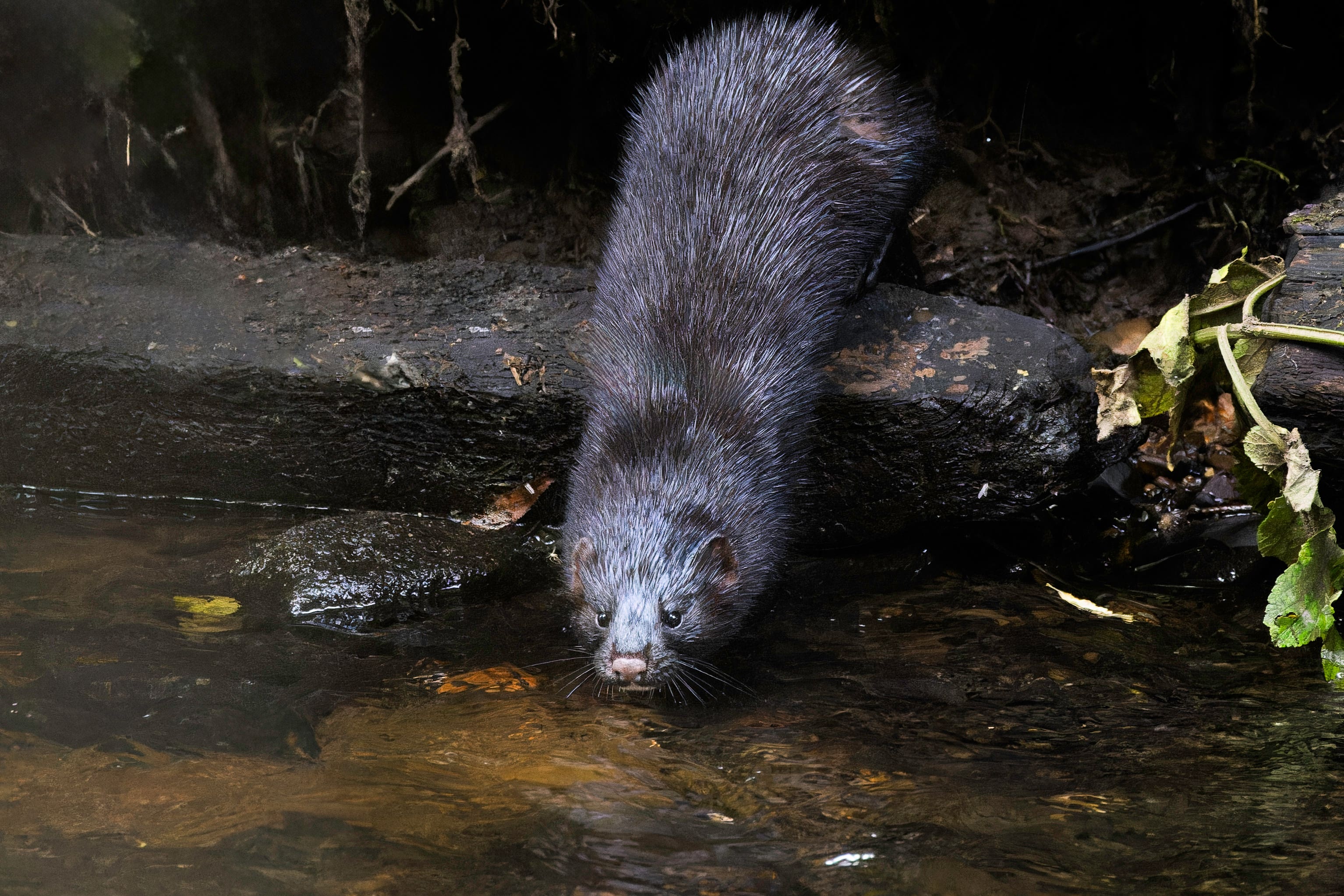Trapping invasive mink with gland scent ‘could help save British wildlife’
The predator has been removed from one area of England and the method could be expanded across the country.

An invasive species of mink can be eradicated from Britain by luring them into cages using a scent from their own anal glands, according to a trial in East Anglia.
Over the last four years, conservationists have maintained a defensive wall of traps, cutting off the region from the rest of the country.
It is now free from mink which has led to an immediate recovery in the species it preys on, with conservationists planning how to expand their method to cover the whole of Britain.
The American mink is a non-native species that lives across Britain and Ireland and was brought over from North America in the early 20th century to be farmed for its fur.
Some animals eventually escaped while others were later released by animal rights activists who did not realise the mink would spread across the country and devour many native species that have not evolved ways to defend themselves.
We use a scent lure, anal gland lure, eau de mink, and that makes the traps very attractive to anything that might be passing
Mink will prey on almost anything they can catch including salmon, seabirds, moorhens, kingfishers and water voles, the latter having declined by 96% as a result.
They are also fiercely territorial and dislike the presence of other mink, which has been the key to the success of the Waterlife Recovery Trust’s trial.
Professor Tony Martin, the charity’s chairman, said: “There are two key things that are different between our way of working and what had gone on before.
“Firstly, every trap we have has got a little box in it which tells us when the trap door closes, so we know immediately that there’s something in the trap and we can go there quickly to attend to it.
“The second thing is we use a scent lure, anal gland lure, eau de mink, and that makes the traps very attractive to anything that might be passing.”
Once caught, the mink are shot with an air rifle, which Prof Martin said is the most humane way of removing the animals.
He estimates that by using this system the whole of Britain could be cleared within five years at a cost of several million pounds, a task that until now has been thought of as impossible.
The British population of American mink is thought to be around 122,000 and eradicating them would give space for endangered native species to bounce back.
Prof Martin said his trial shows this is possible as he now sees an abundance of water voles in East Anglia whereas they barely exist in other regions.
If successful nationwide, it would be the world’s largest eradication project. Previous successes involve clearing mice and other rodents from islands much smaller than Britain, such as the Overseas Territory of South Georgia.
Invasive species is one of the leading causes of nature’s decline, second only to habitat destruction, with scientists estimating the cost to the global economy to be around £336 billion a year.
There are thought to be at least 37,000 non-native invasive species worldwide and the problem is escalating as humans travel around the world faster and more frequently.
Prof Martin said killing invasive creatures such as mink is necessary to rebalance an ecosystem that humans have altered and that doing nothing would only result in more deaths.
He said: “The thing that people sometimes struggle with is this thing of, how can you kill them? What gives you the right?
“They don’t see mink chewing the heads off young kingfishers or going into a nest of water voles and eating all the young – no one ever sees that and so we think oh yeah, let’s let nature take its course.
“Well, fine. You can do that. But just be aware that you are condemning to death hundreds of thousands of creatures.
“So don’t think that by not killing mink, you’re not killing anything. That’s absolutely not the case.”
Bookmark popover
Removed from bookmarks